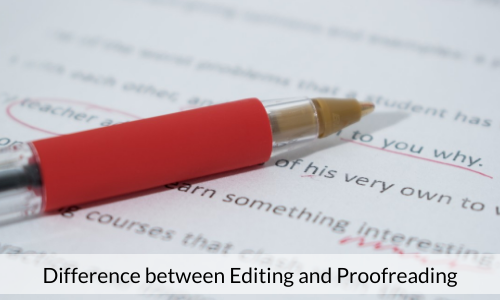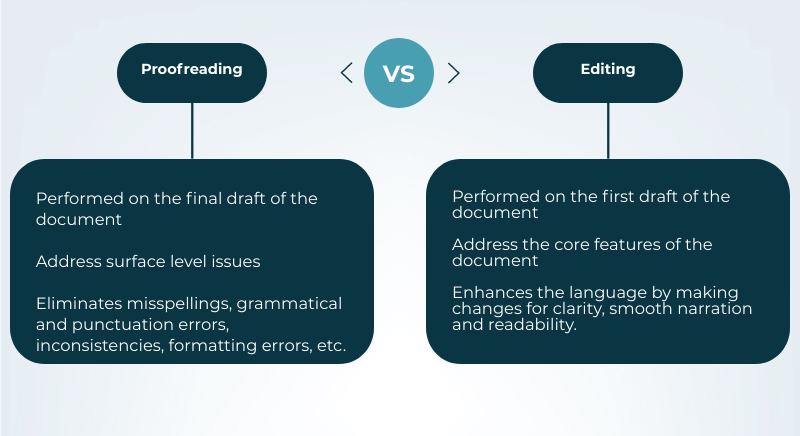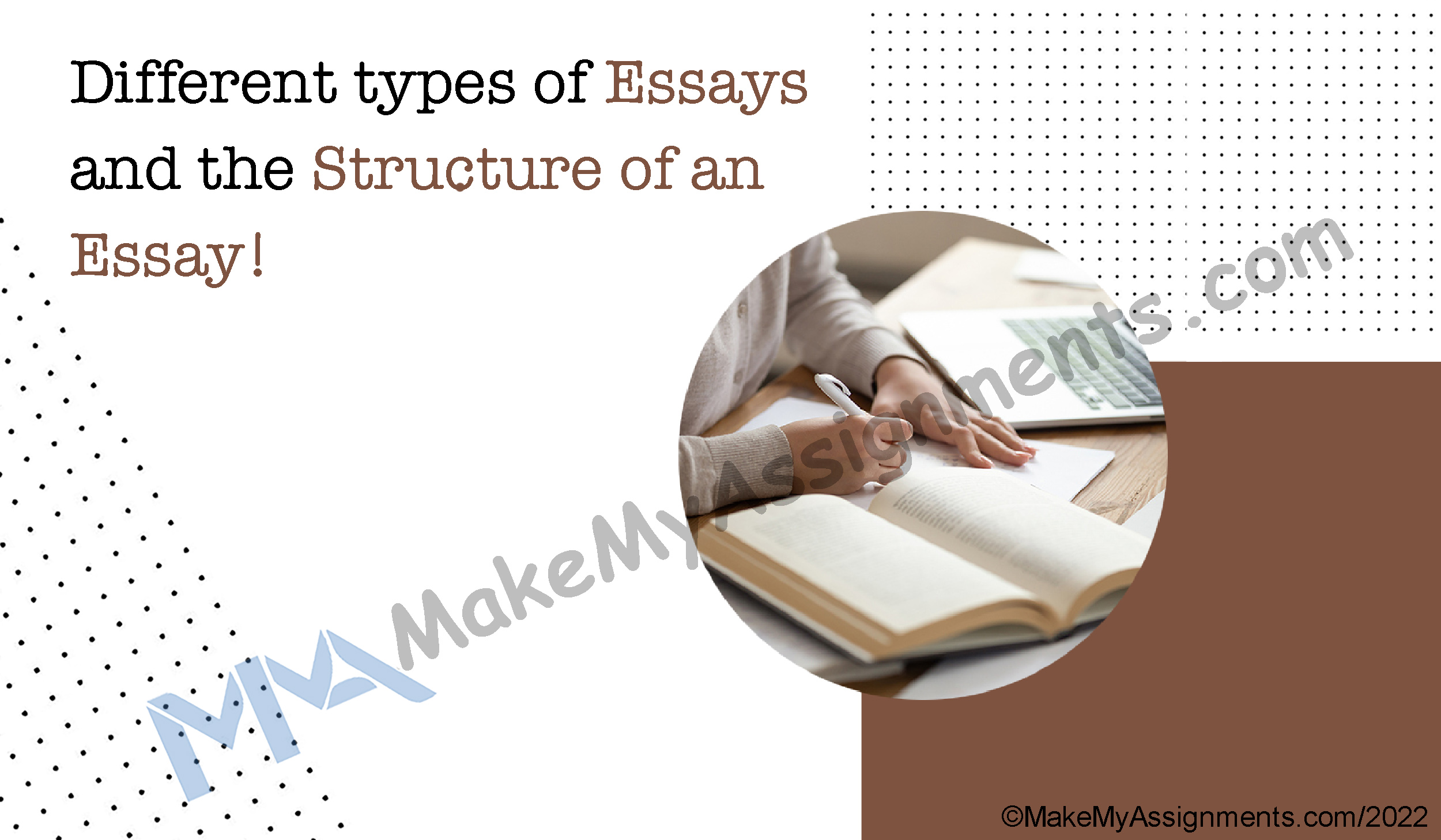
Difference between Editing and Proofreading
Many a times, Editing and Proofreading are kept in place of each other where people tend to think that these two terms have the same meaning. Even the ones who know the difference between the two and their significant meanings tend to mistake these two for each other. Though both these words are often referred to check the accuracy of the document, but both of them hold a substantial amount of difference between each other. And most of us are unaware of this difference between the two.
In fact, students who hire a professional writing service or freelance writer are also unaware of this difference. These clients are simply not aware of which service they actually need and the company they hire is unsure about what exactly he needs to do on the editing or proofreading document. Because of this reason, most of them receive something that is exactly different from what they had hoped for.
Editing and proofreading are two different aspects of document preparation. Students hire a professional editing and proofreading service once they’ve finished writing the first draft of their assignment. The abundance of online editing and proofreading services makes it easy for students to hire a second pair of eyes.
So it becomes really important for the students to know the difference between editing and proofreading. Although, most of us consider this difference a very slight one, but still, it is important to remember the difference.
Proofreading
Compared to editing, proofreading is a bit straightforward exercise. It basically involves the checking of a document for flaws like spelling mistakes, grammatical inaccuracy, sentence formation, and so on. Proofreading also involves the checking of the syntax, whether it’s in order or not. When someone proofreads your document, they basically try to find out all the grammatical, typographical, punctuation and spelling mistakes in the document and correct them.
To some, it might sound like an easy task to perform, but it is not. Most of you think that it only involves correcting surface errors in a document. People also tend to think that proofreading means pointing out and correcting for inconsistencies and mistakes. You might think that anybody can do it and it is not a demanding job. Because all you have to do is carefully read the document and look for grammatical, syntactical and spelling mistakes and errors. Yet, it is not as easy as it sounds. Proofreading is a far more complex task to perform.
To proofread your document, you need to have extensive knowledge of the language because it is a very skill-intensive task. You also need to have the ability to concentrate well for long periods of time. Our brain can easily correct minor and apparent mistakes in a document. In other words, we are not able to notice such small mistakes in writing as we read it because of our brain’s ability to auto-correct. You might have come across exercises on social media that ask you to read sentences or paragraphs that contain wrong spellings. We are able to point out such mistakes because of the same ability of the brain. Therefore, proofreading is a professional’s job.
Thus, a professional proofreader tends to understand the conventions of writing in a particular language and also corrects it. Since his profession is proofreading, he is very well experienced in the job and has an eye for errors that are usually committed while writing the document. They can simply point out and check these mistakes that people generally tend to overlook.
Editing
Editing is said to be a more ambitious mechanism than proofreading. Proofreading simply means correcting mistakes such as punctuations, spellings and grammar, while editing, on the other hand, means checking the whole document holistically. With the help of editing, you are required to check the whole formation that the document has been put together in the best possible manner. This might consist of words, structure, language elements, content quality and convey of ideas and information. You can say that it involves checking everything in the document, ranging from things like checking the facts stated in the document, analyzing the sensibilities of the structural flow, making sure that the information included in the document is correct, making sure that the writing is aligned with the concerned audience and also aligning the content with overall thematic strategy of publication.
Proofreaders are not required to check the overall addition to the writing, while editors need to have themselves work on the piece of writing to enhance its overall quality. This involves replacing verbose texts with succinct words, crisper, adding or modifying paragraphs for better language, utilizing figure of speech such as alliterations, similes, metaphors to make the content look more vivid. In order to align the written piece with an overall theme, the editors need to strategically introduce attention-grabbing elements, catch-phrases, keywords and avoid the overuse of jargon based on the audience requirements.
Editing means that you are examining the sense of your document while checking its quality and structure. So you need to check the sentences in your document are structured in a logical and reasonable flow with avoiding inconsistencies of any sort. In order to improve the standard of the document, the editor can delete some parts or add some. For the editing process, you need to conduct several revisions of the written material and remove unnecessary words and repetitions. As an editor, it is your responsibility to check whether all the questions, hypothesis and concerns are raised in the introductory paragraphs and have been adequately addressed by the author.
Editing can also involve the checking of words and phrases as well as typos and errors. You can also check the tone of the document, whether it is appropriate for the intended audience or not. The editor can also check whether the writer has used the correct words to express the ideas or not. To maintain the quality of the assignment, the editor needs to make sure that several revisions are performed for the text.
Proofreading is just a tiny bit of editing. Editing involves almost everything that is done is proofreading and is a lot more beneficial in the process.



